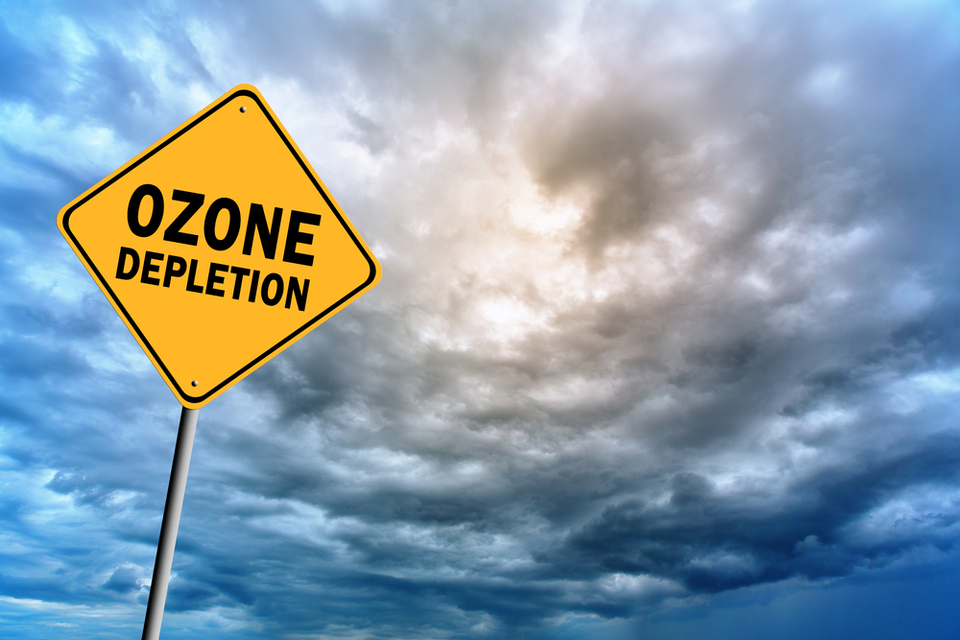NASA’s Goddard Space Flight Center’s latest data confirms that the Ozone Hole is healing.
Three decades after the nations of the world came together and signed the Montreal Protocol, which prohibited the use of chlorofluorocarbons in all household items, NASA has gathered enough data to confirm that the Ozone hole is finally beginning to heal.
The Ozone Layer is the layer of molecules in the Earth’s atmosphere that have kept all living organisms on our planet partially protected from the harmful effects of ultraviolet rays. It is situated in the stratosphere and absorbs a portion of the UV-B radiation from the Sun which reduces its levels to a safe amount before it reaches the Earth’s surface.
New #NASA data reveals that the hole in our Ozone layer is slowly healing!Click To TweetHowever, global industrialization, pollution, and other human activities in the past number of decades have significantly contributed to the Ozone layer‘s deterioration. Investigative research during the early 80s revealed a gaping hole in the Ozone, high above the Antarctic. Without this barrier, humankind and potentially all living organisms on the planet would face certain extinction.

To prevent further damage to our planet’s layer of protection, the Montreal Protocol on Substances that Deplete the Ozone Layer was signed by all the nations of the Earth. In September 1987, the international community agreed to cease the production and consumption of compounds that deplete the Ozone layer. These compounds include chlorofluorocarbons (CFCs), halons, carbon tetrachloride, and methyl chloroform.
Now, 30 years after the ban on CFCs and other Ozone-damaging chemical compounds, our efforts to save the Ozone layer have finally developed into positive results.
Healing the Ozone Hole
According to recent reports from NASA scientists, the ban on CFCs eventually resulted in less Ozone deterioration. To check if the ban has helped in the recovery of the Ozone hole, the researchers gathered and studied the data from the Microwave Limb Sounder (MLS) of the Aurora satellite.
Susan Strahan and Anne Douglass, NASA researchers from the Goddard Space Flight Center in Maryland, analyzed over a decade of Aurora data. It should be noted that the Aurora satellite was launched into space specifically to track our atmosphere’s chemical composition.
The MLS aboard the Aurora was able to gather information on the chemical makeup of the atmosphere during the Antarctic winter between 2005 and 2016.
From that data, Strahan and Douglass were able to determine the changes in Ozone levels every winter of each year.
Surprisingly, the researchers found that the deterioration rate of the Ozone layer has decreased by 20 percent during that period.
“This is very close to what our model predicts we should see for this amount of chlorine decline,” Strahan, a NASA atmospheric scientists and lead author of the study, said. “This gives us confidence that the decrease in ozone depletion through mid-September shown by MLS data is due to declining levels of chlorine coming from CFCs. But we’re not yet seeing a clear decrease in the size of the ozone hole because that’s controlled mainly by temperature after mid-September, which varies a lot from year to year.”
The researchers are currently looking forward to the continued recovery of the Ozone hole and the permanent removal of the CFCs from our atmosphere. However, it was also reported that it might still take decades for the Ozone layer to heal completely.
“CFCs have lifetimes from 50 to 100 years, so they linger in the atmosphere for a very long time,” co-author of the study, Douglass, said. “As far as the ozone hole being gone, we’re looking at 2060 or 2080. And even then there might still be a small hole.”



















Comments (0)
Most Recent